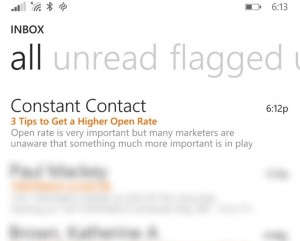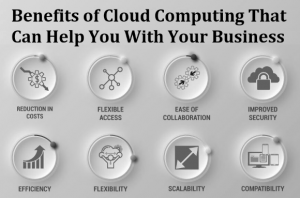AI, evolving marketing stacks and email authentication. Keep these developments in mind as you plan your 2024 strategy.
Whoa, did you just hear that? If you’re a retailer, an ecommerce company, or anybody else who relies on Q4 to make big money, that distant rumbling is the Black Friday engine revving up to what will become a deafening roar.
At this time of year, we’re all crazy, working on campaigns, tightening our final strategy and getting ready to run the last big race. It’s also a fraught time because nobody knows what will happen with holiday spending.
We still hear worries about a potential recession, even though the economy is doing well, at least in the United States, thanks to Gross Domestic Product growth and satisfactory external numbers. But inflation still looms over consumer spending, and forecasts are split between optimism and pessimism.
Forecasting this holiday season is like playing Powerball. Holiday spending will rise 3% to 4% in 2023, the National Retail Federation predicts. This is the smallest gain since the first pandemic year. Other forecasts say consumers plan to take on less debt this year, cut back more or shift spending from things to experience.
Even with everything happening around you, I will ask you to pause your daily business for a minute and look back over this year. At some point before the year is out, you’ll be thinking about what next year will bring. As you do, let’s think about some events that shaped decision-making and will likely factor into your planning for 2024.
These three developments stood out for me this year.
1. AI: The shiny object became a genuine business tool
Artificial intelligence (AI), and more specifically generative AI for creating copy and images, was the hot discussion topic of the year.
AI, in its many forms, has been around longer than that and has been misleadingly marketed for even longer. Some companies claiming to be AI-based were not. But AI remained largely a tool for enterprise-level companies with data, platforms and budget to spare.
In 2022 and 2023, we witnessed first the rollout of AI-driven bots like ChatGPT, DALL-E, Bard and Bing Chat and then a host of proprietary vendor tools that businesses of all sizes and capabilities could use.
Most importantly, people seized on these tools, used them, discussed them, found ways to use them better and talked about them at conferences, in webinars and on discussion lists.
At one point, I felt as if I had gone back to 25 years ago when we were learning about email. Nobody knew everything and everybody was trying something. We all shared advice about what to do, what worked, what didn’t and how to use it better.
Fast-forward to October 2023. My agency, RPE Origin, released a study with Ascend2 that assessed how enterprise email marketers used and thought about AI in general and generative AI in particular. In one finding, 92% said AI would have a major impact on email marketing. More than half are using AI in some form now. Among those who are using AI, the top tactics are content personalization, email retargeting and subject line optimization.
Those are solid indicators that AI is not just the latest shiny new toy, a flash in the pan that the next big thing will replace. In the early 2000s, thought leaders emerged in the email marketing community to preach the gospel of relevant content, one-to-one email campaigns and lifecycle messaging.
At the center of all this discussion was the desire for email marketers to send highly relevant emails that their customers would see in the inbox, open and act on.
This year, it became clear that AI and generative AI gave us the opportunity to accelerate those goals exponentially. That’s exciting. The race has begun for email service providers to develop plug-ins and advancements. Research and development teams should take the lead, with their companies talking to customers, looking at the market to see what others are doing and where they can gain an advantage.
Over this last year I’ve seen multiple demonstrations by ESPs that have already developed the newest iterations of their AI and genAI applications. After years of stagnant development, it’s exciting to be at the forefront of innovation again.
In 2024, I expect select ESPs will launch significant applications that will reduce time and increase sophistication to increase relevance for customer messaging. We’ll see companies release AI and GenAI components with niche functionality or niche solutions that bridge the gap between ignorance and sophistication for marketers.
I also expect companies will apply this technology in reasonable ways. ESPs will be driven by their customers’ expectations and by competition in the market. A vendor who doesn’t bring a platform with some application or relevance for AI to a pitch meeting will be discounted in the consideration process.
AI carved out a bigger footprint in email marketers’ discussions in 2022 and 2023. But 2024 will be the year we see more widespread application.
2. Technology customers are evaluating and changing their marketing stacks
Marketers are still affected by the technology deficiencies they experienced in the COVID-19 era when many discovered their tech stacks were not up to the challenge of supporting the need for rapid strategic and tactical changes.
The attitude for change continued in 2023, especially among large retailers and other organizations that wanted better results from their email platforms. They want the sophistication they need for personalization, dynamic and real-time content, more efficient workflows and ease of use.
We thought we might see a fall-off of this appetite for change because of rocky economic conditions as we came out of the pandemic. But, if anything, it has accelerated. Customers are re-evaluating their ESPs, reassessing their marketing stacks from top to bottom, or considering new technology like customer data platforms. Companies are prioritizing anything they can do to get closer to their customers and get insights from data.
This rate of change can be good. Migrations can be painful, but companies are taking on that pain as part of their investment in innovations.
Companies are making smart decisions, too. Bright and shiny new toys aren’t taking them in. Rather, they’re assessing them according to what they offer and how they can be implemented for end users.
Spending on technology might get pulled back in some areas but increase in others. In 2024, I expect that companies will not tolerate inefficient tech or services that keep them from accomplishing their business goals. I anticipate this need for change will continue, along with a need for services to increase as the path to market shrinks and companies seek new ways to create or increase revenue.
3. Email authentication became a must-do
In late 2023, Google and Yahoo! announced they would change how they evaluate inbound email for inbox placement. This is generally nothing to worry about for many marketers, especially those with up-to-date technology and savvy IT departments.
But along with creating some anxiety among marketers, it has also given people a chance to check in and evaluate whether they are doing everything they can to prove that they are reputable senders sending messages their recipients want.
One friction point is authentication, or the protocols mailbox providers use to verify that an incoming message is legitimate. The new requirements center on authenticating inbound email with protocols like:
- DMARC (Domain-based Message Authentication, Reporting & Conformance).
- DKIM (DomainKeys Identified Mail).
- SPF (Sender Policy Framework).
Tech experts have urged email senders for years to authenticate their emails. The Google/Yahoo requirement now makes that a priority to get done before the new rules go into effect in 2024.
Google’s message targets less-than-reputable senders but reminds “legitimate” senders to check that their sending practices are in order. We continue to impress upon our clients that just because something might be legal doesn’t mean they should do it. The true compliance chain is not just CAN-SPAM but also receivers, blocklist services, the ESP itself and many other layers.
This will continue In 2024. More inbox providers will roll out new policies to protect the inbox and keep their users happy. Blocklist services like Spamhaus or SURBL will tighten rules on filtering spam and other unwanted email. As the email volume grows and relevance decreases, inbox providers and the rest of the compliance stack will work harder to weed out those who flout these rules.
Check with your IT staff to learn whether you have basic authentication like DMARC, DKIM and SPF set up. If not, do it now. As a marketer, you are responsible for maintaining ethical sending habits that get your emails delivered to inboxes.
Wrapping up
At this point in the year, when I look back on 2023, it seems kind of — boring. As an industry, we email marketers were focused on getting back to doing things. In 2023, we transitioned away from COVID-era changes and getting back to business.
We are still trapped in the cycle of prioritizing short-term tactics over long-term strategy. If there’s one thing I hope we see in 2024, it’s a return to emphasizing strategic thinking over get-it-done tactics. But it’s hard to turn that boat around.
As you rev up for the holidays and everything this busy season brings, remember this for 2024: You can increase revenue only by changing what you’re doing and or finding new revenue sources. We can evolve the email channel when implementing a new program, optimize revenue and change our targeting and segmenting strategies.
No longer can you assume you’ll make more money from email just by sending higher volumes. Success will hinge on developing new ideas and optimizing what you’re already doing. Don’t expect to make 20% more money just by increasing volume by 20%.
Good luck as you work through the last weeks of this year. I’ll be back next month with some thoughts to help you get across the finish line and look ahead at what’s to come in 2024.
The post 2023 in review: 3 key trends to inform your 2024 marketing plan appeared first on MarTech.
MarTech(9)
Report Post






